Top 10 Most Beautiful Historical Sites in Nottinghamshire
Nottinghamshire is a county of England. This place is known as an ideal tourist destination for tourists because of its attractive destinations and delicious ... read more...food. Let's find out with Toplist the most beautiful historical sites in Nottinghamshire!
-
The first position on the list of the most beautiful historical sites in Nottinghamshire is Wollaton Hall. It is a magnificent Elizabethan mansion of jaw-dropping size. It was called "the architectural sensation of its era" and is one of the best Grade I listed Elizabethan structures in the nation. Additionally, it is the county's largest exclusively dedicated Natural History Museum.
Wollaton Hall is an example of a traditional "prodigy house," which is a term for ostentatious palatial-style homes built by courtiers and described as "noble palaces of an awesome scale." Wollaton Hall was designed by Robert Smythson and constructed in the 1580s for 16th century industrialist Sir Francis Willoughby and his family from Ancaster stone from Lincolnshire.
In April 2007 the hall reopened following a two-year renovation. Although the prospect room and the kitchens can be toured for a fee, Wollaton Hall is free to enter. The Natural History Museum is jam-packed with amazing sights, including their famed Africa Gallery and fossils, birds, mammals, reptiles, fish, bugs, and creepy-crawlies.
The Nottingham Industrial Museum, the Steam Engine House, and the Yard Gallery are all on the property. Don't miss the two herds of gorgeous deer and the formal gardens in Wollaton Hall Park, which are both listed on the Grade II National Register of Historic Places. Significant portions of the 2011 Batman film The Dark Knight Rises were filmed outside Wollaton Hall, which served as Wayne Manor and is located 5 miles north of Gotham, Nottinghamshire, and is how Gotham City's name was unintentionally given.
Location: Wollaton Park, Nottingham, England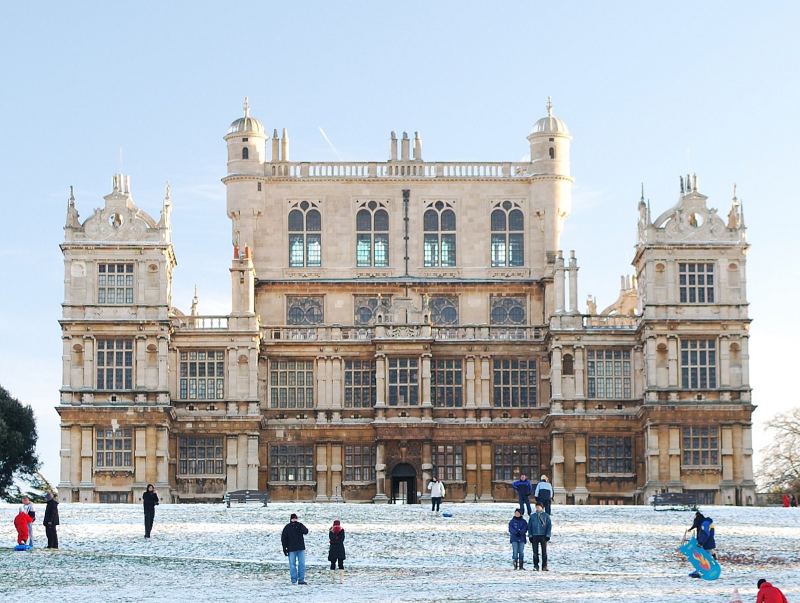
Photo: wikipedia 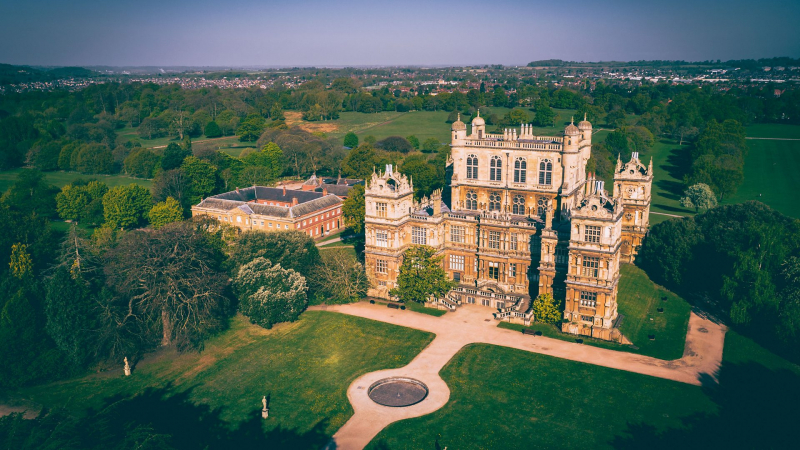
Photo: bbc.co.uk -
One of several establishments claiming to be the oldest in England is Ye Olde Trip To Jerusalem in Nottingham, England. It was once Nottingham Castle's medieval brewhouse, which was built into the rocks beneath the castle. Currently, it is a Grade II-listed structure.
The oldest elements of the structure, which is where the tavern is located, date back to the early 17th century, according to several sources, despite claims that the building dates back to 1189. This inn may not be the oldest in England, but it certainly has a lot of fascinating history within its walls.
The name of the bar comes from a gathering place used by King Richard the Lionheart and his troops in 1189 AD before they traveled to Jerusalem. Additionally, it was rumored to be the renowned bandit Robin Hood's local hideout. The term "travel" in the name is really believed to relate to a stop along a journey rather than the actual voyage, designating the bar as a place people might stop on a lengthy pilgrimage, for example.
Ye Olde Trip To Jerusalem is a great tavern for anyone interested in history even though its precise chronology is difficult to pinpoint. It's a wonderfully eerie place with a sense of history, especially if you peruse its many antiquities or enjoy a drink in one of the cave rooms at the back.
Location: Brewhouse Yard, 1, Nottingham NG1 6AD, England
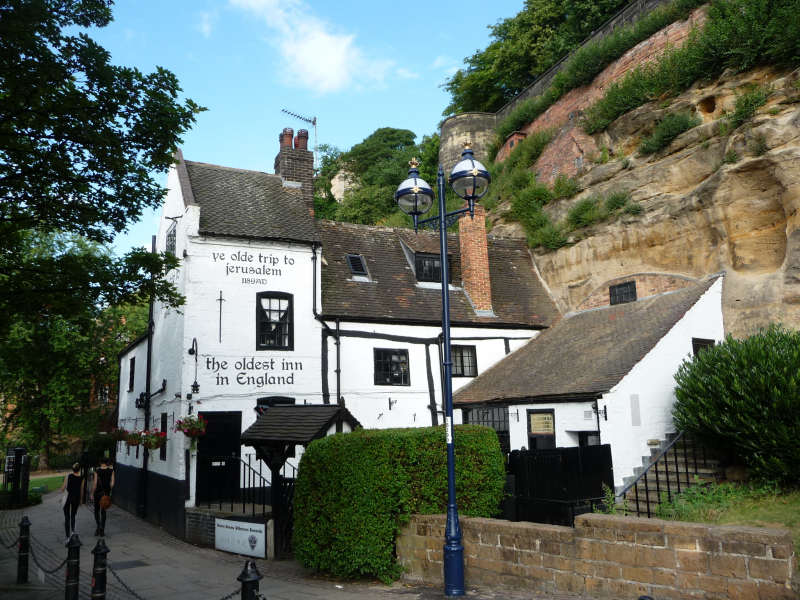
Photo: wikipedia 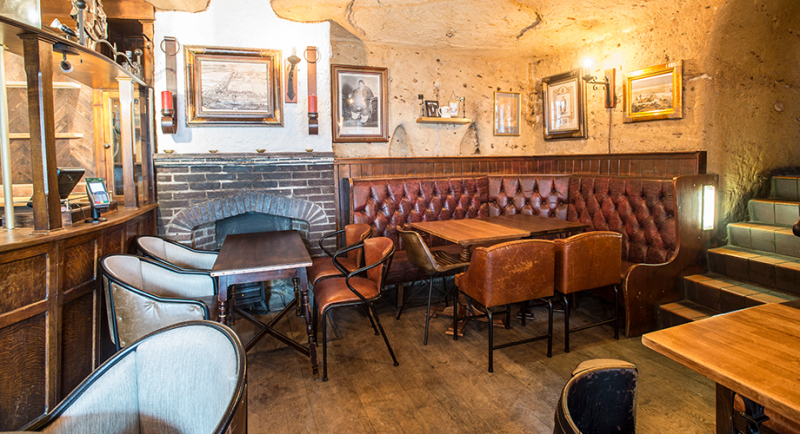
Photo: greeneking-pubs.co.uk -
The National Trust operates The Workhouse, also known as Greet House, a museum in Southwell, Nottinghamshire, England. It first welcomed visitors in 2002. Before the New Poor Law of 1834, which resulted in the erection of workhouses all over the country, it served as the model for the 19th-century workhouse and was acknowledged by the Royal Commission on the Poor Law as the best example among the existing workhouses. It was created by the Rev. John T. Becher, a pioneer in workhouse and prison reform, and William Adams Nicholson, an architect from Southwell and Lincoln. The National Trust calls it the best-preserved workhouse in all of England.
The structure was still in use at the beginning of the 1990s, when mothers and kids were housed there temporarily. The National Trust bought it because it wanted to diversify its holdings and preserve the survival of a Grade II* listed structure that might have been converted into apartments.
The restoration process started in 2000 with roof repairs and is still ongoing. A lot of the rooms have been redecorated to look as they would have in the nineteenth century, while structures, walls, and latrines that were destroyed in the twentieth century have been rebuilt. The Workhouse is one of the most beautiful historical sites in Nottinghamshire.
Location: Southwell, Nottinghamshire, England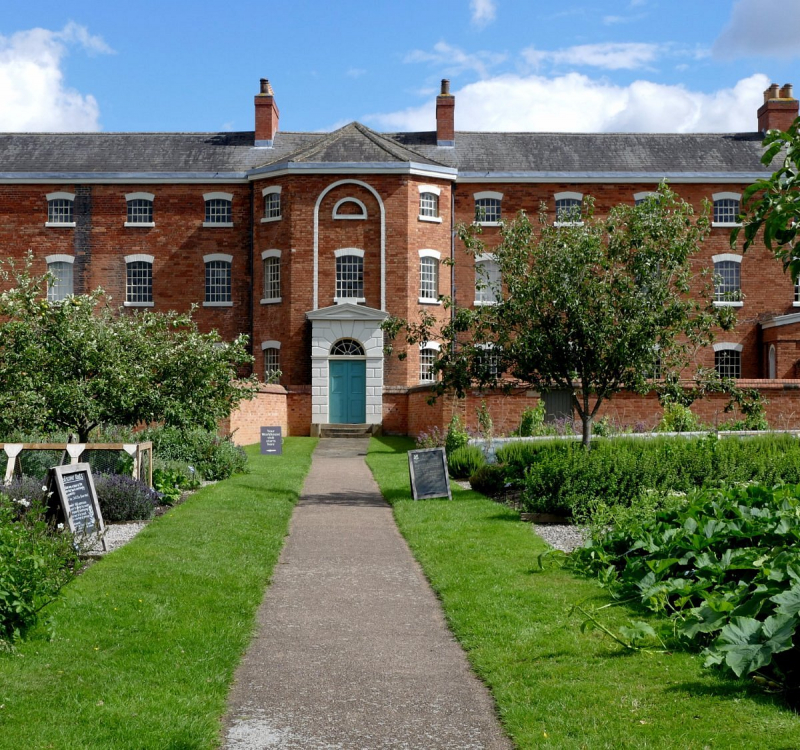
Photo: tripadvisor.co.uk 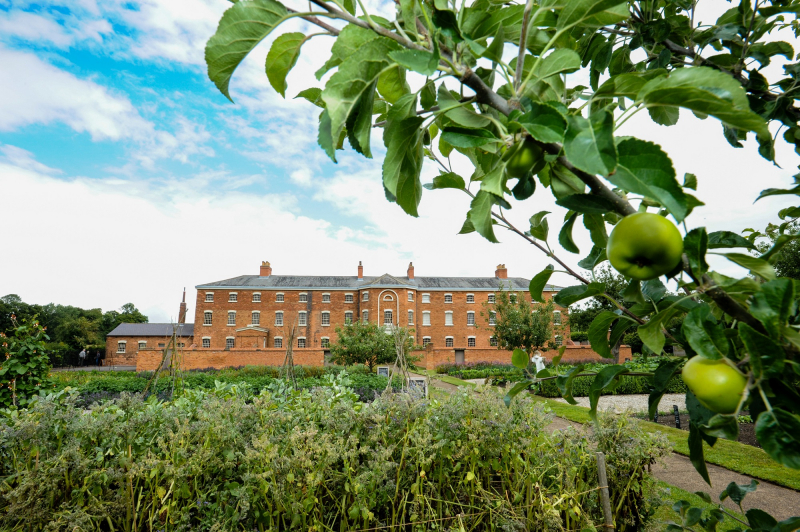
Photo: visitsouthwell.net -
Two miles south of Ollerton in Nottinghamshire, England, lies a country estate called Rufford Abbey. Following the Dissolution of the Monasteries in the 16th century, it was changed from a Cistercian abbey to a country home. The remaining portions of the mansion, which are situated in 150 acres of park and woodland but were partially destroyed in the 20th century, are now known as Rufford Country Park. A neighborhood nature reserve is a part of the park. Gilbert de Gant established the first Cistercian abbey there on July 12, 1147. Cistercian monks from Yorkshire's Rievaulx Abbey settled there.
The Abbey was turned into a country estate during the Dissolution of the Monasteries in the 16th century, but some of its remnants were incorporated into the opulent Tudor palace, and what is left of the abbey offers one of the nation's finest examples of Cistercian architecture. A monk's refectory and cellar in the evocative 12th-century ruins give visitors a glimpse into what life was like for the monks who lived and worked here 900 years ago.
Rubble, brick, dressed stone, ashlar with ashlar dressings, and simple tile roofs make up the structure of the house. It is categorized as an Ancient Monument with a Grade I listing.
Location: Rufford, near Ollerton, Nottinghamshire, England
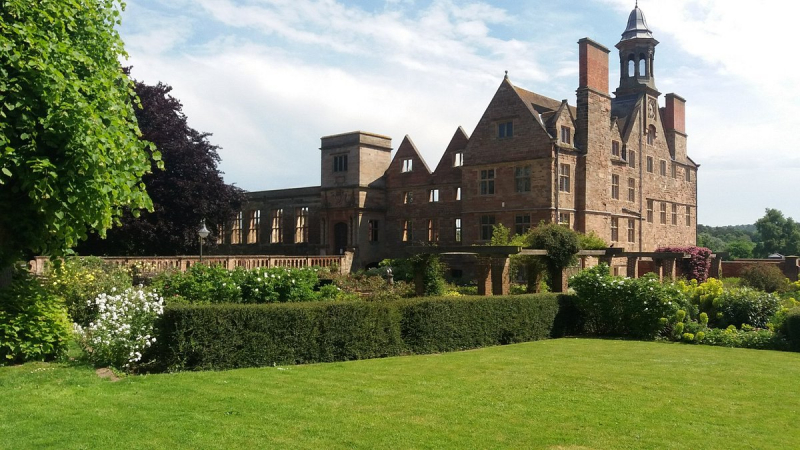
Photo: tripadvisor.com 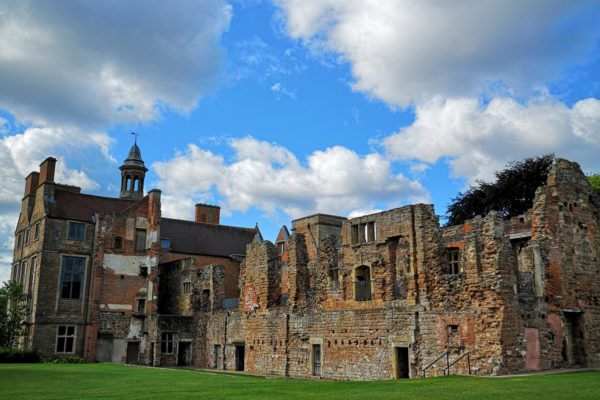
Photo: walkiees.co.uk -
The next position on the list of the most beautiful historical sites in Nottinghamshire is Newstead Abbey. Formerly an Augustinian priory, Newstead Abbey is located in the English county of Nottinghamshire. Following the Dissolution of the Monasteries, it was transformed into a domestic residence, but today it is most known as the former residence of Lord Byron.
Newstead Abbey, which was formerly an Augustinian priory, is situated in the English county of Nottinghamshire. It was converted into a domestic residence after the Dissolution of the Monasteries, but now it is most known as the former home of Lord Byron.The old home and monastic ruins left a profound impression on the young Byron, despite his disgraceful departure from Newstead and the fact that he only lived there for one year full-time, and his poetry style undoubtedly fits with the gothic romance of the location. Particularly impressive is the monastery façade on the west front. You may discover Byron's bedroom in the main house's maze-like maze of chambers, where his own pistol is set out on a nightstand next to his golden bed.
Location: Newstead Village NG15 8NA, Nottingham, England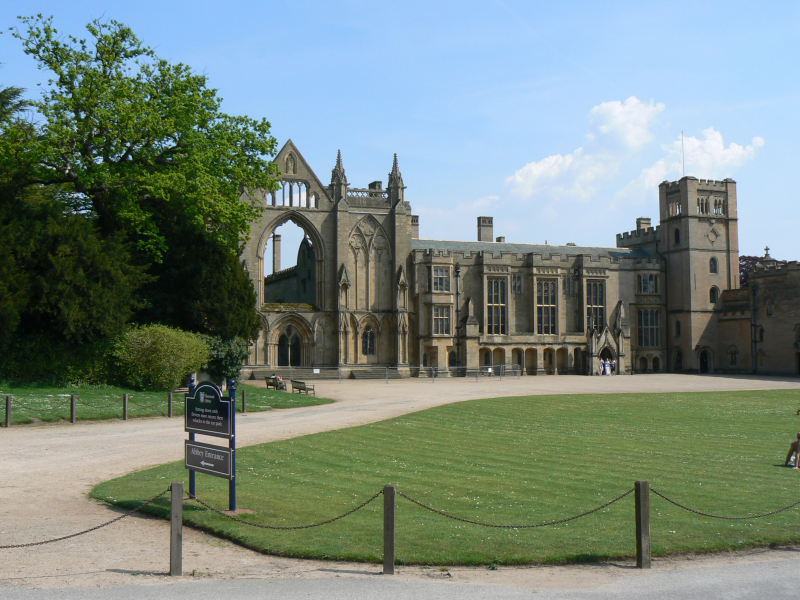
Photo: wikipedia 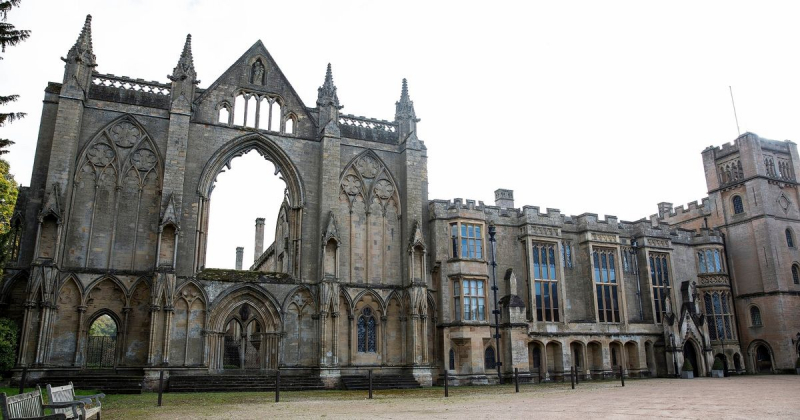
Photo: nottinghampost.com -
One of the most beautiful historical sites in Nottinghamshire is Clumber Park. It is located in Dukeries, a region of Nottinghamshire, England, close to Worksop. The National Trust bought the estate, which served as the residence of the Pelham-Clintons, Dukes of Newcastle, in 1946. On the Register of Historic Parks and Gardens, it is classified as Grade I.
In 1938, the main house was destroyed because of damage from numerous fires. A four-acre walled kitchen garden and the adjoining Gothic Revival chapel, both designated on Grade I, are still standing. The National Trust, which oversees the estate and grounds, welcomes visitors all year long.
Clumber, which was a monastic property throughout the Middle Ages and was listed in the Domesday Book, eventually passed into the ownership of the Holles family. John Holles, the 4th Earl of Clare, the 3rd Earl of Newcastle upon Tyne, and the 1st Duke of Newcastle enclosed it as a deer park in 1709. In the middle of the park, near to the River Poulter, Clumber House was converted into a hunting lodge.
Location: Worksop, Nottinghamshire, England
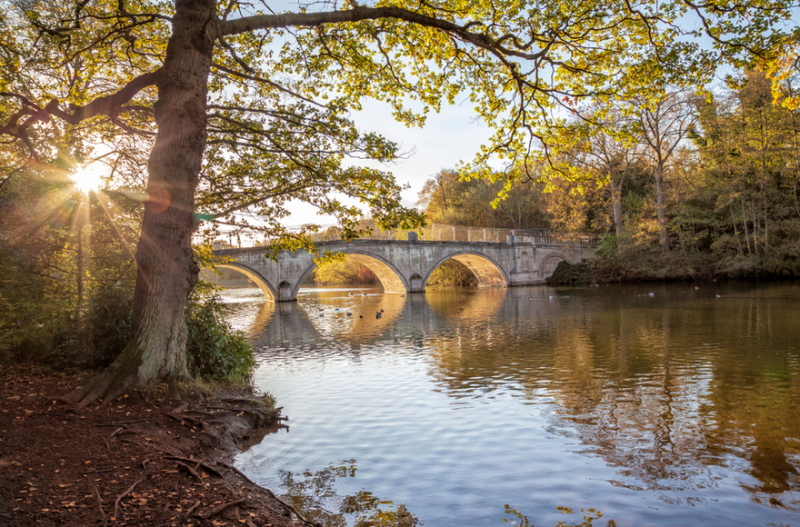
Photo: experiencefreedom.co.uk Video: https://www.youtube.com/watch?v=OE7FwdtjqO4 -
A former Royal Air Force station at Winthorpe, Nottinghamshire, England, close to Newark-on-Trent, is now home to the Newark Air Museum, an aviation museum. There are several different planes at the museum.
The Newark Air Museum is a must-see for anyone with an interest in the history of aviation and is situated on a portion of the former World War Two airfield of RAF Winthorpe, close to the border between Nottinghamshire and Lincolnshire. This paradise for aviation enthusiasts is home to an amazingly diverse collection of more than 90 aircraft and cockpit pieces that together provide a fairly thorough overview of aviation history.
When it first opened in September 1940, the airfield was known as RAF Winthorpe. It held No. 1661 Heavy Conversion Unit, training Avro Lancaster crews, in No. 5 Group with about thirty aircraft from 1942 until 1944. It joined No. 7 Group in 1944, which was still a part of Bomber Command. It was given to Transport Command in 1945.
A Supermarine Swift, Hawker Sea Hawk, Percival Prentice, and a Hawker Hunter, all of which have been designated as National Benchmarks by the National Aviation Heritage Register, are a few of the most coveted aircraft on exhibit at Newark.
Location: Newark-on-Trent, Nottinghamshire, England

Photo: wikipedia 
Photo: coventryrocks.co.uk -
In Southwell, Nottinghamshire, England, Southwell Minster is a cathedral and a minister. It is located 13 miles (21 km) from Mansfield and 6 miles (9.7 km) from Newark-on-Trent. The Diocese of Southwell and Nottingham as well as the Bishop of Southwell and Nottingham both have offices there. It is a listed building of grade I.
Southwell Minster became a cathedral in its own right for Nottinghamshire and a portion of Derbyshire, including the city of Derby, in 1884, 344 years after intentions to make it a cathedral in August 1540 were first made. In 1927, the diocese was split into two, and the Diocese of Derby was established. A royal visit to present Maundy money was held in remembrance of the diocese's centennial. The grant of Arms that is currently used as the diocese coat of arms was designed and paid for by George Ridding, the first Bishop of Southwell.The Norman church that replaced the Saxon minster's nave, transepts, central tower, and two western towers continue to stand out as examples of austere Romanesque architecture. They are the earliest component of the current church, with the exception of the fragments listed above.
Seven bays and a distinct western bay make up The Nave. The arcade's short, elliptical columns with scalloped tiny capitals. Each bay of the triforium features a solitary substantial arch. The little windows in the clerestory have circular heads. The round window apertures on the outside are. Between the clerestory's interior and outside window openings, there is a tunnel-vaulted passage. The main roof of the nave is a trussed rafter roof with tie beams between each bay. The aisles of the nave are vaulted.
Location: Church St, Southwell NG25 0HD, England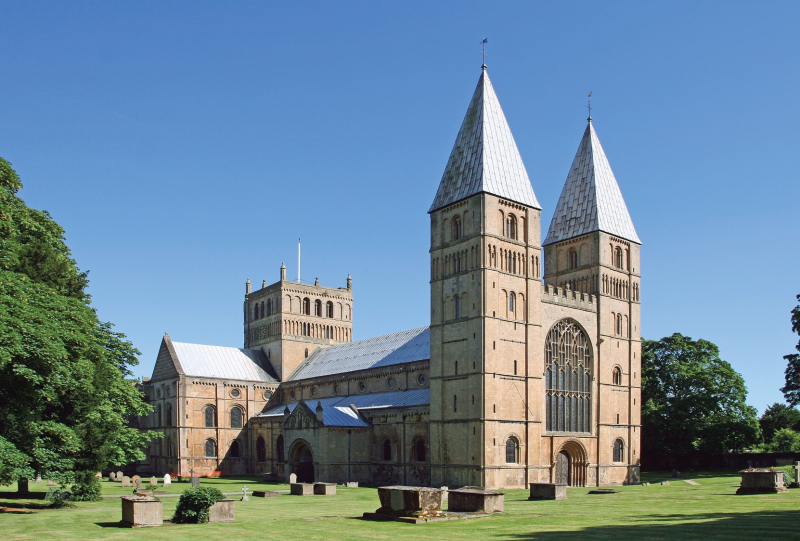
Photo: southwellminster.org 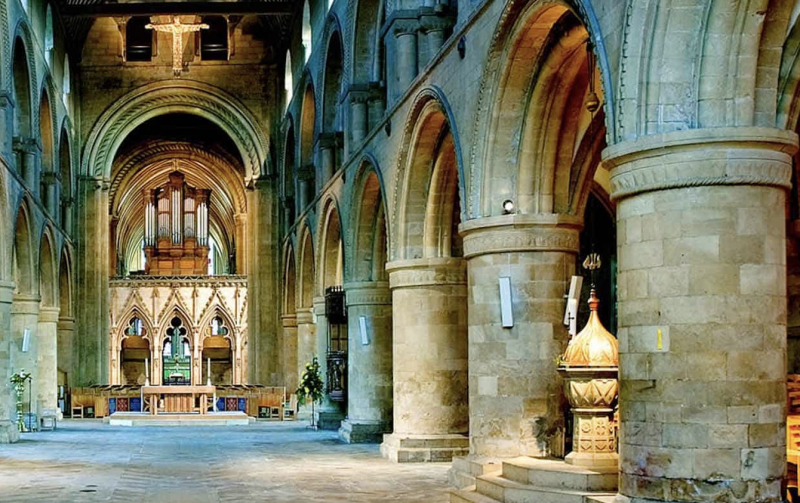
Photo: englishcathedrals.co.uk -
The Papplewick Pumping Station was constructed by the Nottingham Corporation Water Department between 1881 and 1884 to pump water from the Bunter sandstone to supply the City of Nottingham, England, with drinking water. It is located in open agricultural land about 3 miles (4.8 km) by road from the village of Papplewick in Nottinghamshire. Gothic Revival structures had two beam engines that were powered by six Lancashire boilers. Up until the station was decommissioned in 1969 when it was replaced by four submersible electric pumps, the equipment remained in its original configuration with the exception of modifications to the boiler grates.
In order to preserve the location as a static museum, a Trust was established in 1974. However, plans quickly expanded to include engine restoration and routine steaming. In 1975, one of the beam engines was put into service using the sole boiler that had been given the necessary safety certification. Since then, the second engine has undergone refurbishment, and both are steam-tested frequently. Following a grant of £1.6 million from the Heritage Lottery Fund, brand-new visitor facilities were constructed in 1991, and comprehensive restoration of the buildings was finished in 2005. The facility also includes a number of other engines, which are also displayed during steaming days, in addition to the beam engines.
Location: Rigg Ln, Ravenshead, Nottingham NG15 9AJ, England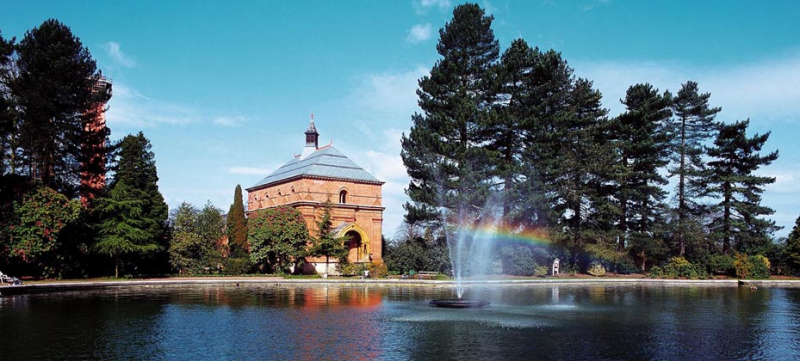
Photo: papplewickpumpingstation.org.uk 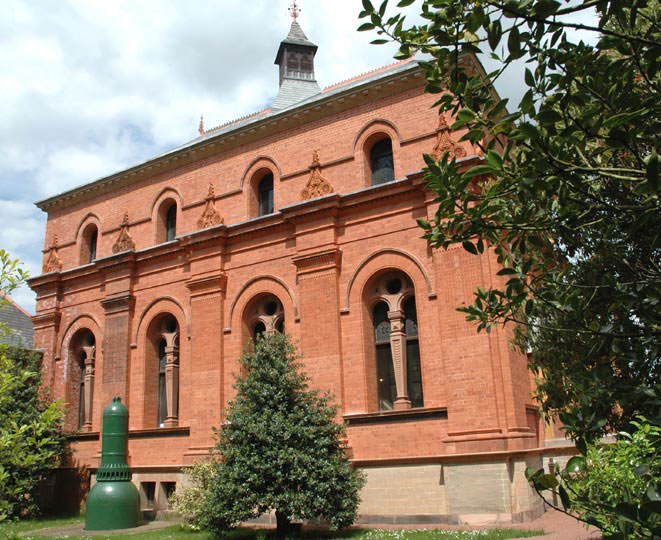
Photo: papplewickpumpingstation.org.uk -
Sherwood Forest, a royal forest in Nottinghamshire, England, is well-known for its long-standing connection to the Robin Hood tale.
Since the end of the Last Glacial Period, the region has been covered in trees. At present, Thoresby Hall is located in the village of Edwinstowe, which is surrounded by the 424.75-hectare Sherwood Forest National Nature Reserve. It is a remnant of an older, much larger royal hunting forest that was once known as the shire (or her) wood of Nottinghamshire. This forest was bounded on the west by the River Erewash and the Forest of East Derbyshire, and it extended into many neighboring counties (shires). The forest, which was subject to the forest regulations, may have covered up to 25% of Nottinghamshire when the Domesday Book was compiled in 1086.
The Permian and Triassic New Red Sandstone underlie the area where Sherwood Forest is located. The Chester Formation, an outcrop of pebbly sandstones, is where the greater portion of the Forest is located. Younger rocks are discovered in that direction because of the gradual eastward dip of the terrain, whereas older rocks are exposed to the west.
Every year, Sherwood welcomes about 350,000 visitors, many of them are from neighboring nations. The natural reserve holds a week-long Robin Hood Festival in August. The main figures from the Robin Hood legend are present at this event, which recreates a medieval setting. A medieval encampment with jesters, musicians, rat-catchers, alchemists, and fire eaters is also present, along with jousters and strolling performers dressed in medieval garb.
Location: Nottinghamshire, England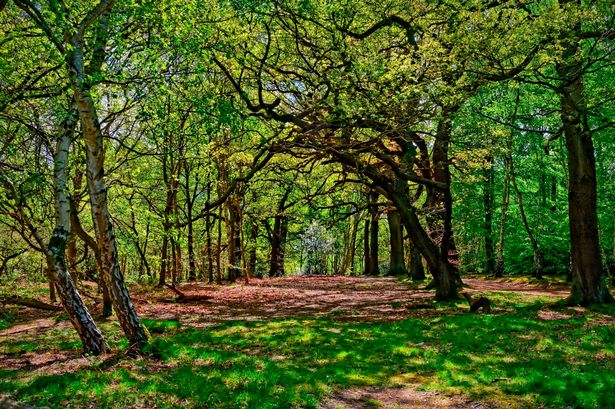
Photo: nottinghampost.com 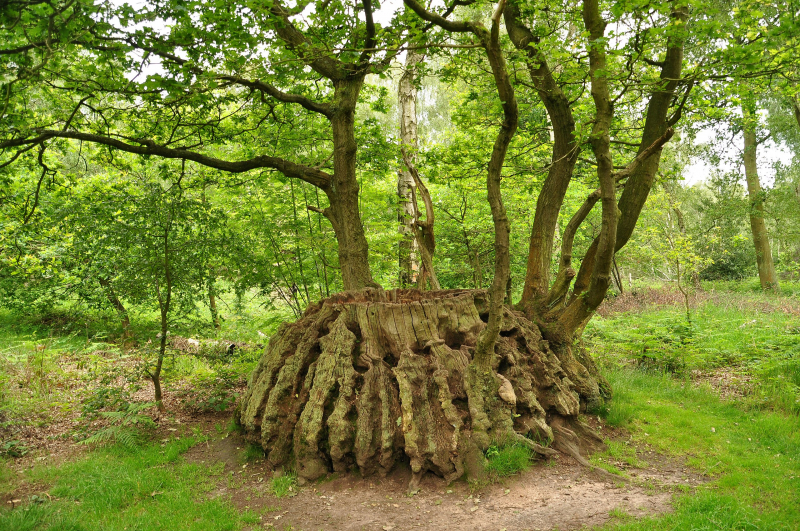
Photo: wikimedia commons































